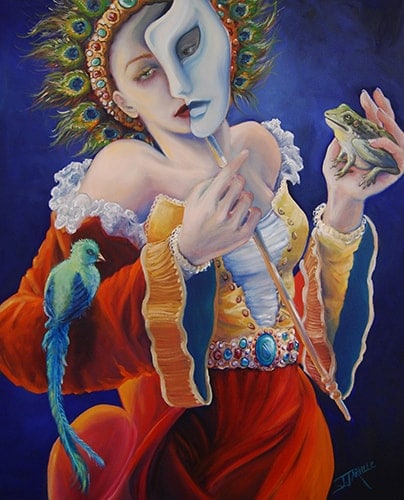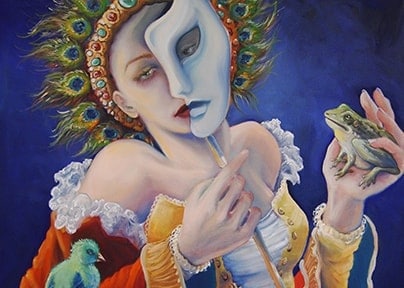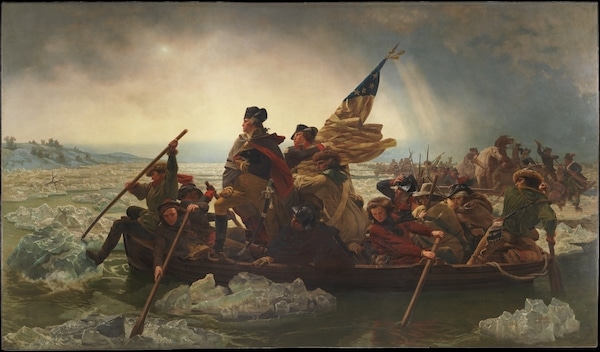Does an article about an artist’s feelings belong in a business-education forum?
Yes, it does. When you decide to become a professional artist, you are making a decision to put a wild, creative, and often personal realm under economic pressure. You’ve lost the luxury of creating only when the spirit moves you. You are bringing the culture of the heart into the culture of business, and that’s a transformative process. It’s your job as an artist to steer the process so that it’s the right kind of transformation for you: both serving the integrity of the creative impulse, and giving you the economic stability and a good quality of life to sustain the long-term viability of your career.
There’s a certain raw interest in the work of artists who struggle with poverty, addiction, mental health, and tragedy; they are often a fluorescence, the burning glory of a star on its way to extinction. That’s not the star we want to shoot for.
Although I have logged 20 years in arts management, I still fundamentally feel like “an artist.” When I’m working as a performer, time flows differently, and it’s easy to be late because I’m staring at the sky, dreaming of pterodactyls. I’m more irreverent and courageous (when I’m not busy being terrified of disapproval). In this mode, I’m messy and not naturally strategic: I’m drawn to opportunities by gut instinct.
On the management side of the arts, however, I’m disciplined, keep strict lists, create a workflow with a logical sequence, research thoroughly, have an overview of the industry so that I can advise other artists, and sometimes even get frustrated when the artists I’m working with aren’t on my linear timeline and ticking all of my admin boxes. So I get it. I get both. We are all both.
“Professionalizing the personal” is an idea I learned from my acting teacher, Deena Levy. Actors bring very personal content to their roles, but you have to do it on cue, in very impersonal and high-pressure environments, with lights in your face and sound equipment taped to your underwear. You have to play relaxed when you’re anxious, and sexy when you have food poisoning. There’s nothing natural about it. The only things that allow such a contradictory mixture of elements to work reliably at a professional level are technique, strategy, and good humor—and that’s true for all kinds of artists.
The process of moving between the raw-personal and tempered-professional realms is at best, an alchemy. Let’s look at a few ways to keep the fire burning and navigate these transitions.
Switching Hats

Swapping one hat for another is the simplest way to think of the dual responsibilities of an artist who is the CEO of their own career: scheduling creative time and business time, and dividing yourself into two roles. It comes down to time management, with focused blocks set aside for each and a commitment to use your time as planned, and there’s some great content on this site to suggest how best to do that.
“The switching hats” expression is an interesting one, as there’s an image of a costume change between them. For some of us, there’s a process of getting into character to be able to arrive at a meeting professionally dressed, make three key points, and go over a contract; and then re-focusing for the studio to be ready to bring technical skill, an open heart, and a willingness to get messy. This approach suggests that you should just own that there are distinct tasks, and it’s okay sometimes to feel like they belong to two different people.
Crossing The Streams
While switching hats is a useful metaphor, there are times when you’ll find yourself in a much more nuanced situation. The common denominator for the art and business skill sets is YOU, and there are areas where they overlap. That crossover area has a chemistry of its very own.
It can get weird when, for example, the insecurity you feel as an artist leads to procrastination in your business. It can also get magical when you realize that you’re a better bookkeeper than the person you hired to do it—AND that you unexpectedly love it. The tone of how you run your business is and should be influenced by the kind of creative work you do—that’s natural branding. Your collectors and collaborators will see it as being authentic because it is.
The skills and education you bring to the table as an entrepreneur come in part from your creative background. The trick is to work from the strengths of these overlapping areas and avoid the pitfalls of prematurely bringing the fragility and free-flowing aspects of the creative process into the business process.
Creative Stages
We are all a work in progress. A successful business model accounts for quick rewards and long-term payouts. As the leaders of our own businesses, we juggle immediate, mid-term, and long-term priorities. The same is true on the creative side. At any given moment, we have work that’s been shown, reviewed, or bought; we have work ready to go but that hasn’t seen the light of day yet; we have half-finished and raw-stages projects; and we have pie-in-the-sky future projects cooking on the back burner, accompanied by jotted-down notes or sketches.
Only the first two are, strictly speaking, in the business realm, but the rest of them could be at any point—especially when unexpected things happen, like a grant application, or a show with a related theme that drives you to comb through your options and get specific content ready for prime time.
There are also moments when offering your collectors a peek into your process is a great way of building these professional relationships. There’s discernment in knowing which part of your process and your work belongs in the public eye, and when.
Fear of a Blank Canvas
The first part of the creative process can be the most overwhelming—even more so after what we consider to be a major success or failure. A very accomplished gallerist friend of ours recently said that painters sometimes call him in a panic, as they stand in front of a blank canvas and don’t know what to do. I worked with a literary agent whose clients were among the most successful writers in the country, and they also called the agent mid-breakdown while staring at a blank page.
It’s very human to want to call the person to whom you’re accountable, looking for support when you’re terrified that you won’t have a product for them, but don’t do that. These people are usually not artists themselves and often have no idea how to help you. You know who does? Other artists.
Go to your network of artist-peers (if you don’t have one, check out TAF) and talk it out over beers, know you’re not alone, and hear their strategies and funny stories. If the blow hit deep, you could talk to your best friend or shrink as well. Then when you’ve digested the raw panic and transformed it into more professional language, assess whether or not you need to ask your professional team about changing the parameters or deadline on your project.
An Outside Eye
The more personal the content of your work, the more important it becomes to have an outside eye. Artwork that is directly about personal experience benefits from our close and intimate relationship to the content. The drawback, however, is that it’s harder for us to stand back and understand what our public is seeing in the story, what might be missing, what’s just raw-enough, and what needs polish.
While we should be true to our expressive instincts, it’s a fine balance to transform the part that just feels right and true to us, into something that communicates our ideas to everyone else.
Feedback from an artist peer, a director, a curator, an editor, or even a friend can be invaluable. It is built into the process of the performing arts, and into the editing stages of writing, but it has to be sought more intentionally in visual arts. Sometimes, the feedback is just wrong and irrelevant, and we toss it out. At other times, it’s on-point but doesn’t feel organic, and we have to work through resistance.
Work that is only cathartic or expressive might be essential to our process and creative flow, but as professionals, we’re also aspiring to something that will speak to other people. So while this consideration shouldn’t stop us from making feel-good work with personal content, it might influence our process of refining it and give us a sharper instinct as to which pieces might sell.
Surprising Success
Every artist I know has had commercial or critical success with a piece that they don’t think is all that great. I have a friend who made a film on a whim, and it gets a new laurel from a festival every week, but he finds it mystifying. There are other projects on which he worked harder and cares about more.

That’s partly because as the creator, we are not always the best judge of how our work is seen and how it might land in the culture, because we’re too close to it. Something that lands commercially is probably hitting a cultural hot-button in the right way and at the right time. If it lands critically, it’s most likely a skill-based or intellectual version of the same thing. If it was an easy creative process (assuming that we have a professional skill set), perhaps it came from a deep instinct and somehow reads as being more unique or authentic than our other work.
It’s up to each artist to gauge how to handle the “feedback” the world gives about the monetary and aesthetic value of our work, and make the best decisions about how and if that influences WHAT we want to make. Clear professional goals absolutely guide those decisions—as does a receptiveness to the messages that the market, gatekeepers, and popular opinion are sending back to us. Those messages can feel very personal, but we don’t have to take the outcomes personally.
Real Vulnerability is Gold
When it comes to artistic greatness, what separates the women from the girls and the men from the boys is when a high technical skill level co-exists with a singular personal voice. This is an insanely demanding dual task.
Artists can get locked into technical proficiency and lose their human quality. A jazz guitarist colleague told me that when you get to be a monster technician, you can play in phrases longer than the human ear can follow, but the musical thing to do is play as if you’re a trumpet player, and phrase the notes as if you have to take a breath. You have to re-humanize it. (Yes, we all know four-year-olds who are free-flowing spontaneous creative geniuses with their paints—but that’s purely expressive and, like all things concerning four-year-olds, unpredictable.)
People at the very top of their games know how to work with their personal, weird, untamed qualities and keep their “voice” alive, even in pressured situations where they have to create quickly, and make room for that spark in the midst of managing the business aspects of their careers.
Go With The Flow
Bringing forth something specific and personal from our creative reserves and subjecting it to the rigors of an impersonal system takes courage and discipline. Everyone experiences overlap between their personal and professional realms, but those of us in the business of creativity require special maintenance to keep things flowing between the two. It’s my hope that by demystifying that flow, we can begin to think of ourselves as less artificially divided and better able to weather the challenges—and enjoy the off-the-charts moments of satisfaction—that are inherent to our unique ways of life.







